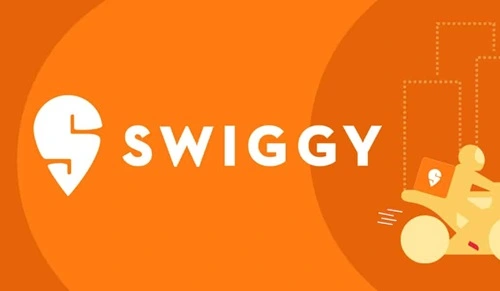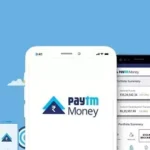Swiggy is a well known food delivery application operating on the hyperlocal on-demand food delivery model. In simple words, Swiggy enables people to order food online from their local restaurants and get the same delivered to their doorsteps. As per an estimate, online food delivery accounts for 15% of the organised food industry in India and Swiggy accounts for a major share of this market.
Introduction to Swiggy
Swiggy was founded in the year 2014 as an online food ordering and delivery startup by Rahul Jaimini, Sriharsha Majety and Nandan Reddy. Apart from food delivery, Swiggy also provides on-demand grocery delivery services under Instamart and same-day package delivery services under Swiggy Genie. Swiggy started its chain of cloud kitchens called Bowl Company in the year 2017 and had established over 1000 cloud kitchens for its restaurant partners by the year 2019.
Swiggy partners with the local restaurants in towns and cities and has its own network of delivery partners to pickup and deliver the orders. Restaurants receive the orders through their restaurant apps. A broadcast signal is sent to the driver’s app of the delivery partners in the vicinity of the restaurant. Any delivery partner can choose to accept and deliver the order.
In the year 2019, Swiggy launched its instant package pickup and drop off service called Swiggy Go which was later renamed as Swiggy Genie. Swiggy launched its online grocery delivery service called Instamart in the year 2020. In 2022, Swiggy purchased the restaurant table reservation platform called Dineout from Times Internet.
Swiggy is present in more than 500 Indian cities with tieups with more than 25000 restaurants. Till date, the app has been downloaded over 100 million times.

| Company name | Swiggy |
| Industry | Online food ordering and delivery |
| Foundation year | 2014 |
| Founders | Rahul Jaimini, Sriharsha Majety and Nandan Reddy |
| Headquarters | Bangalore, Karnataka, India |
| Network | 500+ cities across India |
| CEO | Sriharsha Majety |
| Parent company | Bundl Technologies Pvt Ltd |
| Number of employees | 6000 as of 2023 |
| Website | www.swiggy.com |
Understanding the business model of Swiggy
Swiggy’s business model is based on hyperlocal on-demand food delivery which connects the customers with the restaurants in their cities and towns. The mainstay of the business model is quickly delivering fresh and hot dishes to the customers right at their doorsteps. Let’s have a look at the major elements of Swiggy’s business model.
1. Commission Model
Swiggy’s primary source of revenues is the commission earned from its restaurant partners. The company charges 15-25% commission on the total bill of the order including the Goods and Services Tax or GST. The exact commission depends upon the frequency of orders received, location of the restaurant, level of dependency of the restaurant on Swiggy, commissions charged by competitors and level of penetration into the city. Commission is charged for generating sales leads for the restaurants and delivering the orders through a delivery fleet of the company.
Swiggy also offers exclusive accounts to its restaurant partners. Exclusive restaurants get multiple benefits such as greater visibility on the app and even 2-3% reduction in commission.
2. Delivery Charges
Swiggy does not have any minimum order requirement and delivers orders priced below Rs. 100 as well. Thus, in order to reduce logistical costs for delivering low value orders, Swiggy charges a delivery fee for orders priced below Rs. 250. Delivery charges usually hover around Rs. 20 depending upon the distance of the restaurant from the delivery location.
Swiggy charges an additional surge fee to deliver orders placed during high demand, rain, middle of the night and special occasions. Customers get the facility of waiving off the delivery charges by a purchasing a subscription based membership for a certain number of months at a time.
3. Advertisements
Swiggy earns revenues through two types of advertising models; banner promotions and priority listing. Restaurants get better visibility by paying for displaying their banners on the app. The company charges a premium from the restaurants for displaying the banners depending upon the region.
Swiggy also offers priority listings to the restaurants on payment of premium charges. The restaurants are displayed to the customers as a list on the app. Priority means a higher rank on the list. Higher the position of the restaurant on the list, greater is the cost it needs to pay Swiggy.
4. Affiliates
Swiggy earns revenues by affiliating with banks and financial institutions. The company refers the credit cards of its affiliate partners to the customers. Customers are able to see various discounts and other offers on credit cards on the order tracking screen. Swiggy has partnered with multiple global institutions such as ICICI, HSBC Bank, Citibank and American Express.
Swiggy One Membership
Swiggy offers a subscription of 3 months at a stretch known as Swiggy One to its customers. Swiggy One members get multiple benefits such as 10 free deliveries on orders above 149, no surge fees and up to 30% extra discounts.
Conclusion
Swiggy is launching a host of innovative features and customer benefits to increase its customer base and steal a march over its customers. Despite competition from Zomato and other online food delivery apps, Swiggy continues to grow.

Meet Suhas Harshe, a financial advisor committed to assisting people and businesses in confidently understanding and managing the complexities of the financial world. Suhas has shared his knowledge on various topics like business, investment strategies, optimizing taxes, and promoting financial well-being through articles in InvestmentDose.com


